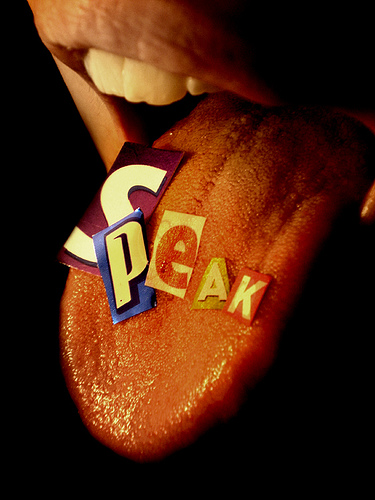
Easy Accounting
While a sole trader does not have to keep formal basic accounts financial records are required to enable the net taxable profit to be calculated with paperwork to support that calculation. Documentary evidence includes paperwork obtained from third parties such as sales records and receipts, purchase invoices and receipts and if maintained the business bank account. Sole Trader accounting really is the simplest easy accounting as the formal reporting requirements are the easiest.
It is not essential to employ an accountant to prepare the sole trader accounts and the tax return. Employing an accountant has the advantages of saving time in preparing the basic accounts, tax return; professional advice on what expenses can be claimed including calculating the capital allowances. The disadvantage is the cost and that is the choice of the sole trader.
Tax returns, Income Tax and National Insurance
Sole traders are assessed for income tax and national insurance on an annual basis based upon the self employed Tax return everyone self employed must complete and send to the tax authority. HMRC issue tax returns in April each year which need to be completed and submitted by 31 October following the end of the financial year. Tax returns filed online can be submitted with a financial submission date of 31 January, some 10 months after the end of the financial year.
There are 2 versions of the self employed tax return, The short tax return is completed if sales turnover is below £64,000 for 2007-08 and the more detailed full self employed tax return completed if sales exceeded the cut off point which for 2007-08 was also the level at which vat registration was required.
In calculating the tax payable HMRC deduct from the net taxable profit the personal tax allowance and calculate the income tax payable at the 20 per cent basic rate for 2008-09 on profits up to the higher earnings threshold and 40 per cent on net earnings above the higher threshold. Losses incurred in previous years can be offset against the net taxable profit.
Self employed pay class 2 national insurance contributions which were set at £2.30 for the financial year 2008-09. Refunds, through the small exceptions rules, are possible if net taxable profits are very low. In addition self employed also pay class 4 national insurance which in 2008-09 was 8% on net profit above the personal allowance and up to the primary threshold and 1 per cent above the national insurance primary threshold
Following the financial year end on 5 April the income tax and national insurance calculated by HMRC must be paid in full by the following 31 January. In addition HMRC also assess the liability for the next financial year and 50 per cent is also payable on 31 January with the remaining 50 per cent payable by 31 July.
Benefits and disadvantages of vat registration
Starting up as a sole trader does not involve compulsory registration for vat. If a business is unregistered for vat then the vat charged on purchases is treated in the accounts as a cost and vat is not added to the sales values. Businesses are required to register for vat when sales reach the vat threshold in a 12 month period, the current vat threshold as from April 2008 is £67,000.
If sales are mainly to the public who cannot reclaim the vat charged then it is usually better to delay registration until the threshold is reached. Where sales are mainly to other vat registered businesses that can reclaim the vat the sole trader adds to the sales value then it may be appropriate to voluntarily register to enable the vat input charged on purchases to be reclaimed against the vat charged to customers.
A business set up that registers for vat needs to maintain more than just basic accounts. Easy accounting can be adopted provided there ia an audit trail to support the quarterly vat return.
Bank accounts
A sole trader does not need to open a separate business account. If a specific business account is used then HMRC have a right to see the transactions through that business account as supporting evidence to the accounts and so bookkeeping records should be maintained. HMRC may ask to see a private account but they do not have a statutory right to do so.
Since all banking transactions are the personal responsibility and liability of the sole trader if a separate business bank account is opened then it must state the name of the sole trader. Typically the bank account name would be Your Name trading as Business Name.
The advantages of maintaining a separate business account are significant in keeping business and personal finances separate. The disadvantages are business bank charges and being committed to declaring the details to HMRC should they ask. If the business is run honestly then that should not be a problem.
 Terry Cartwright qualified as a Chartered Management Accountant and Chartered Company Secretary in 1971. A successful business career followed as Head of Finance for major companies in the UK and several consultancy appointments. In 2006 he created DIY Accounting producing Accounting Software for self employed and small companies that use simple accounts spreadsheets to automate tax returns.
Terry Cartwright qualified as a Chartered Management Accountant and Chartered Company Secretary in 1971. A successful business career followed as Head of Finance for major companies in the UK and several consultancy appointments. In 2006 he created DIY Accounting producing Accounting Software for self employed and small companies that use simple accounts spreadsheets to automate tax returns.
Month: November 2008

Oh no!!! Not another observational humor monologue!
I realize that few readers have an interest in writing observational humor monologues. And I also realize that because of the You-Had-To-Be-There factor, reading a transcript of a monologue from an event that you did not attend probably doesn’t make you laugh. So why do I publish them?
Writing about creating and using humor can easily result in something that looks and sounds like a lecture. Nothing but theory becomes an exercise in mental gymnastics. It’s not especially interesting and it’s difficult to link the theory to real-life examples. You’ve probably heard the E.B. White quote, “Analyzing humor is like dissecting a frog. Few people are interested and the frog dies of it.”
So the question becomes, “how to teach and learn humor without feeling like you’re in a lecture hall?” I use observational humor monologues as a teaching tool. Hopefully it’s a vehicle which brings humor techniques to life with real-world examples of humor in action.
My improv troupe had a workshop last week. Ten of us met to practice the principles of good improv comedy. Nobody in the group has a dream of becoming a main-stage player at Second City or being discovered by Saturday Night Live. Most people take improv classes because they are fun, because they teach skills which apply to success in life, and because they help people become better public speakers. It’s not about the improv…it’s so much more than that.
Likewise, members of a Toastmasters Club did not join because they intend to become a professional speaker. They join for the fun and to gain some skills that will make them more productive and competitive in the workplace. It’s not primarily about public speaking, it’s about leadership, growth, and personal communication.
Within a Toastmasters Club, members have the opportunity to compete in several contests every year. It’s not about the contests, it’s not about winning. People participate in the contests to improve their skills.
You don’t enter a Cartoon Caption Contest or a Joke Contest with the intent of becoming a professional writer. You most likely do it to sharpen your creative skills. Maybe you do it just to have fun.
People don’t go to the gym to become a body builder. They go to the gym simply to be in a little better shape than they are today.
So it is with studying Observational Humor Monologues. It’s not about creating the monologue. It’s about discovering the Ah-Ha’s which help you make the connections needed to create your own fresh humor. It’s about the possibility of closing a PTA meeting with just one observational humor line. It’s about brightening a staff meeting with just one small quip which you create out of nothing. It’s about relaxing a prospect at a sales presentation because you can react naturally with humor, even if it’s only once. It’s about opening a speech with just one observational humor line. It’s about becoming better at using humor…just a little bit. Studying Observational Humor Monologues, you slowly begin to see how humor connections are made. One step at a time. We grow in baby steps. And the exciting thing is…the better you get…the faster you get better.
So remember, it’s not about the monologue. It’s about something much more important…you and your skills.
![]() Eric Feng is the go-to guy if you want to learn how to impress your investors and customers through public speaking. For more tips and tactics that you can use immediately in your next presentation, visit The Public Speaking Blog.
Eric Feng is the go-to guy if you want to learn how to impress your investors and customers through public speaking. For more tips and tactics that you can use immediately in your next presentation, visit The Public Speaking Blog.

I should not be providing this information, the government should.
I believe the IRS should include a book like this to every American when they send you your tax forms. That way every American would know how to get their tax money back, because even though I call this “free money,” it really isn’t free. This is money that you gave to the government to pay your taxes and now you can get it back.
Here are a few basics on Government Money Programs that everyone should know:
1) Only 12% of Gov’t Money goes to the poor
Most Americans think that government money programs are for everyone else… for instance only the poor, minorities or friends of the president.
But, only 12% of Government Handouts go to the poor
And only 25% of Government Programs Have Income Requirements
The rich and famous, including Donald Trump, H. Ross Perot, Dick Cheney and George W. Bush, all made millions as private citizens with the help of government money programs. If they’re eligible, you certainly should be too.
2) Only 20% of Free Money is called “Grants”
Most free money programs are not called “grants” by the government, they’re called “direct payments.” It is very easy for someone not to know all about government jargon, but just a little research can clear up quite a few misconceptions. Don’t discourage yourself by focusing only on “grants” and dismissing the other 80%.
3) 50 Million people don’t even know they’re eligible
This is one of the most important points to keep in mind: The Government cannot and does not advertise programs that offer free money. But it’s out there, lots of it. You just have to invest time finding the programs.
4) You can’t make one phone call and just get a check in the mail
Getting government money is like looking for a job. When you knock on one door and ask about a job, and they tell you that you are not qualified, you don’t go home and wait for them to change their mind.
No Way. You would never hear back. You have to be persistent and go from one company to the next until you find a good fit.
5) Free Money keeps growing no matter who is sitting in the White House
We constantly hear about government budget cuts and that makes people believe that government money is going away or will soon be gone. But every year for the past 30 years the amount of free government money given out to individuals keeps growing. It keeps increasing no matter if it’s the republicans or the democrats who are in charge. With the new Obama administration especially, we will be seeing more offered to small business and entrepreneurs in the form of government money programs.
6) You certainly don’t need a professional grant writer
Nine out of ten times you will not need help in filling out an application. Most free money programs to pay for your bills, education, health care, housing and even business require just a few pages of blanks to fill in.
If you have trouble filling out an application for money, don’t hire a consultant. Go to the office that is handing out the money. The are obligated to help you fill out your application and they are in the best position to know what should be included.
7) You can apply for as many programs as you like
Don’t worry about how many programs you can apply for, If you see a program that you think might work for you, apply to it. Sure there are some programs that give money for specific reasons and if you get accepted from 2 separate places you will have to refuse one of the offers, but that’s still a nice position to be in.
8) It doesn’t always matter if it sounds like you don’t qualify
Here’s an example: “All the money is given out by August 30th”: The end of the accounting year for most government agencies September 30, but the agency can start giving out more money beginning October 1, and you can be the first in line.
In all likelihood, you can wait another 30 days for your money.
9) Information can often times be out-of-date
Every day programs come and go. Every day people change their address, phone number and websites. It is just a fact that these things happen in our modern society.
But remember, if a listing leads you to a non-working number or website, it does not necessarily mean that the program is gone. Call the agency listed in the program description and ask.
10) Don’t be intimidated by the idea that the applications are all long and confusing
Getting an application that is only one-page long is not unreasonable at all. Many of the government programs that give our grants really don’t need a lot of financial information because unlike a bank they are not worried if you don’t pay the money back. They don’t want it back. It’s free money.
 Matthew Lesko is a best-selling author, government money expert and business mentor. His website, MyAmericanBenefitsPlan.com, is an interactive, online resource that serves as a hub linking entrepreneurs and free-money-enthusiasts alike. Lesko’s 30 years of researching government money programs and his extensive video talents are all going into the web service. Lesko holds free, online seminars on Wednesdays, live at UncleSamLive.com.
Matthew Lesko is a best-selling author, government money expert and business mentor. His website, MyAmericanBenefitsPlan.com, is an interactive, online resource that serves as a hub linking entrepreneurs and free-money-enthusiasts alike. Lesko’s 30 years of researching government money programs and his extensive video talents are all going into the web service. Lesko holds free, online seminars on Wednesdays, live at UncleSamLive.com.

If you’re facing (or anticipating) one change of several changes, these tips will help you navigate through transition and help you land on your feet:
1. Acknowledge what’s happening. Get real about your situation and eliminate denial. Identify what you can control and/or influence to gain perspective in devising a strategy for action.
2. Invite collaboration. Brainstorming is an excellent resource for pooling knowledge by gathering other points of view for creative problem solving.
3. Ramp up self-care. Taking good care of yourself physically, mentally, emotionally, and spiritually is a critical factor in staying strong and focused. Establishing some daily routines/habits provides consistency and a sense of control.
4. Need to vent and/or have someone just listen? Build a support team of family, friends, colleagues and or professionals who will hear you with objectivity and encouragement. Surround yourself people who will help you regain your emotional and mental perspective to stand strong in clarity, confidence, faith and trust.
5. Interrupt and replace negative self-talk. Fear tends to view situations through a narrow lens with an emphasis on problematic thinking and worse case scenarios. Take charge of your attitude. YOU are the source of your thinking and behavior. The way you view a situation determines your experience. Instead of focusing on the worst, expect the best. For 3 tips on managing negative self-talk, click here
6. Be engaged in pleasurable or stimulating activities. Lighten up and take time to relax with friends and family. Building in opportunities to have fun will help take the edge off emotional stress and tension.
7. Recall a past experience you successfully transitioned. How did you do it? What can you take from your past success to use in future experiences? Drawing from personal history builds confidence and stirs the creative juices.
8. Invite curiosity. Ask yourself, “How does this situation compel me to grow? What can I learn about myself, my life from this change? What opportunities does this change offer me? What can I take from this experience to improve myself/my life?” Use what you discover to move you forward.
9. Practice being present. Focus on where you are today to guide your decisions and actions. Most fear and emotional distress are generated by keeping focus and attention on the future. Worrying about what ifs, worse case scenarios and problems keep anxiety and stress high. Bringing yourself back to the present moment will help you disengage from the dramas and stories you are creating in your mind (that will most likely never occur).
10. See yourself in the future, at the other side of the transition. Create a vivid picture in your mind of how you see your life at a future point. Be sure to add as much emotion to the image you create to help you hold this intention in your mind and heart. Make this picture positive and compelling. Incorporate this image as part of your daily routine (see #3) and use this picture to pull you forward through your transition.
11. Make a plan of action that includes daily and week goals with the vision you created in #10. Completing big and small goals support a feeling of control and sense of accomplishment. When developing your action plan, be sure to tune into your intuition and inner guidance for direction and clarity.
12. Incorporate spiritual practices every day. What connects you to your faith and trust to help you regain your spiritual center?Adding spiritual practices will help you experience greater peace and calm. Responding from a centered space invites inspired and deliberate action.
No matter what is happening in your life, the one power you always retain is how you choose to view yourself and your situation. Realize that every experience offers a learning opportunity. Rather than seeing what’s next as something to fear and avoid, you can choose to run towards the next phase of your life with excitement and enthusiasm as you open to new possibilities.

By adopting an approach of researching the opportunity and getting the administration right from the start the chance of success is increased, and that is important, as more new start up businesses go out of business leaving the sole trader with personal debts than survive in the first 3 years.
Setting up with the Business name, Business plan and personal liability risk
The first point of how to start up business as a sole trader is you can use your own name or choose a suitable business name. All transactions would be conducted under the actual name of the sole trader or the actual name trading as the business name. The sole trader own name should be used on all business stationery, letters, invoices, receipts and cheques.
As all liabilities incurred are the personal responsibility of the sole trader and there is no distinction between business assets and personal assets. Should the business incur losses, and that is quite common in the first year, all losses remain the personal liability of the sole trader.
An important part of how to start up business to take before trading commences is to prepare a business plan. A business plan is essential for a new start up if funding is being sought but is also important since the first year trading performance can be difficult. The business plan consists of sales, purchases, investment in assets and a financial profit statement plus cash flow forecast.
The major benefit initially to be obtained from the business plan for a new start up is the research the sole trader conducts into such areas as competition, market research, suppliers, costs and funding requirements. A business plan is essential to raising new start up finance.
HMRC registration, local authority licenses, retail change of use.
When trading starts, which would be the date of the first sale or purchase, all new start up sole traders have a responsibility to register as self employed with HMRC. Self employment business registration is required within 3 months of trading commencing or the sole trader may be fined £100 for failing to register on time. Following business registration HMRC will send an annual self employed tax return which has to be completed each financial year. It is usually advisable to adopt the 5 April as the year end date and so the first year would be less than 12 months trading.
The self employed registration form can be obtained by telephoning HMRC or visiting and downloading the new business registration form direct from the HMRC website.
There is no requirement to register the business or business name with Companies House which is solely for limited companies.
Depending upon the type of trade there may be a requirement to for business registration with the local authority where either an application for change of use of the premises might be required for a retail business and/or a local authority license required for the proposed trade such as a taxi driver license, child minder, restaurant or pet shop license. Sole traders need to contact the local authority to determine if a license is required for the new business.
Insurance and public liability
When considering how to start up business a sole trader consideration should be given to insurance requirements. Employers liability insurance will be required if employees are employed, insurance specific to the trade may be advisable to offer protection from claims, public liability insurance may be required and is often essential in retail trades particularly if that trade also requires a local authority license.
Payroll and Employees
The business set up status of a sole trader is not affected if employees are engaged as the sole trader is still self employed. If employees are engaged then the sole trader needs to register with HMRC as an employer and operate a PAYE scheme which involves calculating and deducting income tax and national insurance from employees gross pay, incurring the employers national insurance contribution, issuing payslips and keeping records of all employees and deductions. Income tax, employees and employers national insurance can be paid to HMRC quarterly if under £1500 per quarter or monthly if exceeding this level.
Networking with business groups
There are numerous groups a sole trader may consider joining for more information on how to start up business. The government organisation Business Link offer free advice on many issues and may have new business grants available for new start ups. Business Link also has contacts with local enterprise agencies who offer support. The Federation of Small Business charges an annual subscription, hold regular local meetings and provide a range of discounted services to small businesses.
 Terry Cartwright qualified as a Chartered Management Accountant and Chartered Company Secretary in 1971. A successful business career followed as Head of Finance for major companies in the UK and several consultancy appointments. In 2006 he created DIY Accounting producing Accounting Software for self employed and small companies that use simple accounts spreadsheets to automate tax returns.
Terry Cartwright qualified as a Chartered Management Accountant and Chartered Company Secretary in 1971. A successful business career followed as Head of Finance for major companies in the UK and several consultancy appointments. In 2006 he created DIY Accounting producing Accounting Software for self employed and small companies that use simple accounts spreadsheets to automate tax returns.